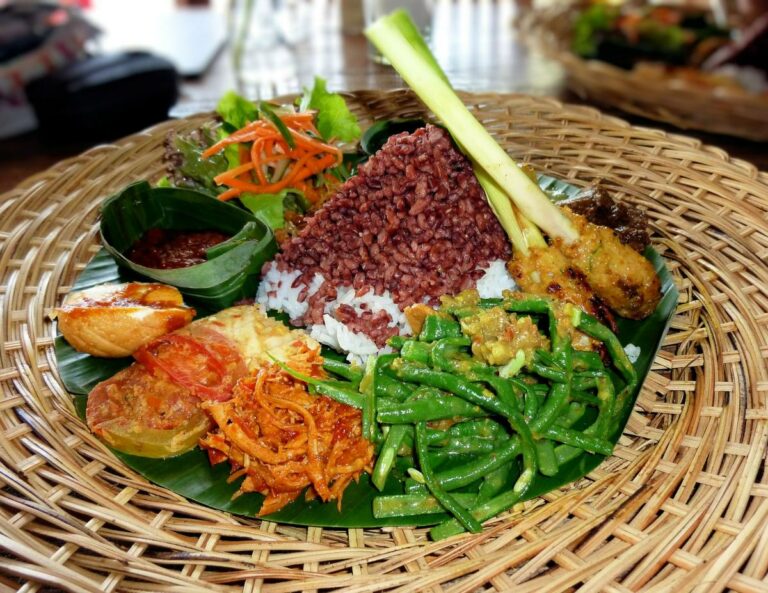Introduction: Indonesian cuisine
Indonesian cuisine is a rich tapestry of flavors and ingredients that have been influenced by centuries of trade and colonization. The country is made up of more than 17,000 islands, each with their unique culinary traditions. Indonesian food is known for its bold spices, such as coriander, turmeric, and cumin, and its use of fresh ingredients like coconut, lemongrass, and lime leaves.
Regional differences in Java
Java is the most populous island in Indonesia and is home to some of the country’s most famous dishes. The cuisine in Java is characterized by its use of sweet soy sauce, called kecap manis, and coconut milk. Java is also known for its iconic dish, nasi goreng, a stir-fry of rice, vegetables, and meat that is often served with a fried egg on top. Other popular dishes from Java include gado-gado (a vegetable salad with peanut sauce), sate (skewered meat in a peanut sauce), and tempeh (a soybean cake that is often fried).
Sumatra’s unique culinary traditions
Sumatra is the sixth-largest island in the world and is known for its diverse and spicy cuisine. The cuisine in Sumatra is heavily influenced by Indian and Middle Eastern flavors, which is reflected in dishes like rendang (a slow-cooked beef curry) and sambal (a spicy chili paste). Sumatra is also home to a unique dish called gulai kambing, a spicy goat curry that is often served with rice and fried potatoes. Other popular dishes from Sumatra include martabak (a savory stuffed pancake) and mie goreng (a stir-fry of noodles, vegetables, and meat).
Bali’s distinct flavors and spices
Bali is an island in Indonesia that is known for its beautiful beaches and distinct cuisine. Balinese food is characterized by its use of spices like galangal, turmeric, and lemongrass, which give the dishes a unique flavor profile. One of the most famous Balinese dishes is babi guling, a spit-roasted pig that is marinated in a blend of spices and served with rice and vegetables. Other popular dishes from Bali include lawar (a vegetable salad with shredded coconut), ayam betutu (a spiced chicken dish), and sate lilit (a skewered fish dish).
Lesser-known regional cuisines
Indonesia is a vast and diverse country, and there are many lesser-known regional cuisines that are just as delicious as the more well-known ones. For example, Sulawesi, an island in eastern Indonesia, is known for its spicy seafood dishes like coto makassar (a spicy beef soup) and ikan bakar (grilled fish). Meanwhile, the cuisine in Kalimantan, a region in Borneo, is characterized by its use of wild game, such as deer and wild boar. Other lesser-known regional cuisines include Papua, Maluku, and Nusa Tenggara.
Conclusion: A diverse and delicious cuisine
Indonesian cuisine is a diverse and delicious tapestry of flavors and ingredients that reflects the country’s rich cultural heritage. From Java to Sumatra to Bali and beyond, there are countless regional dishes that are worth trying. Whether you’re a fan of spicy foods or prefer milder flavors, there’s something for everyone in Indonesian cuisine. So, the next time you’re looking for a culinary adventure, consider exploring the unique and exciting flavors of Indonesia.

